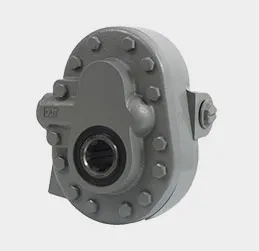what is precision casting
Understanding Precision Casting An Overview
Precision casting, often referred to as investment casting, is a sophisticated and versatile manufacturing process that has gained significant popularity in various industries. This technique is characterized by its ability to produce complex shapes with high dimensional accuracy and excellent surface finish. In this article, we will explore the fundamentals of precision casting, its advantages, applications, and the steps involved in the process.
At its core, precision casting involves creating a mold using a pattern made from materials such as wax or plastic. The process begins with the creation of a mold from the original pattern. The pattern is coated with a ceramic shell, which is then heated to harden and form the mold. Once the mold is ready, it is filled with molten metal to create the final part. After the metal solidifies, the mold is broken away, leaving behind a precisely cast component.
Understanding Precision Casting An Overview
Furthermore, precision casting allows for the use of various materials, including steels, alloys, and non-ferrous metals. This versatility opens the door to numerous applications across different sectors. For example, in the aerospace industry, precision cast parts are essential for engine components and structural parts where strength and lightweight characteristics are critical. In the medical field, precision casting is used to create complex surgical instruments and implants that require meticulous accuracy and biocompatibility.
what is precision casting

The precision casting process typically involves several key stages, each contributing to the overall quality of the final product. The initial step is preparing the pattern, which can be made from wax, plastic, or metal. The choice of material depends on the design requirements and the desired surface finish. Once the pattern is complete, it is coated with a special slurry that consists of fine sand and a binding agent. This coating is crucial as it forms a shell around the pattern.
After the coating is applied, the shell is heated in an oven, causing it to harden and form a sturdy mold. This step also melts away any wax patterns used, hence the term lost-wax casting. The resulting mold is then preheated to reduce thermal shock when the molten metal is poured in. Once the mold reaches the desired temperature, it is filled with molten metal, which can be done by gravity or through pressure methods, depending on the complexity of the mold and the material being used.
Cooling is the next stage, where the metal solidifies within the mold. The cooling time can vary depending on the thickness and material, but once solidified, the shell is removed to reveal the precision-cast part. Final processing may include cleaning, machining, and inspection to ensure that the component meets the required specifications.
In conclusion, precision casting is a pivotal manufacturing process that combines intricate design capabilities with efficiency and material conservation. Its numerous advantages make it a preferred choice in many critical applications, from aerospace to medical devices. As technology advances, the precision casting industry continues to evolve, leading to even more sophisticated techniques and materials. By understanding the principles of precision casting, manufacturers can harness its potential to produce high-quality components that meet the demands of modern engineering.
-
OEM Sand Cast Pump Valve Fittings - Hairun Sourcing | Precision Engineering, Industrial EfficiencyNewsJul.13,2025
-
EcoGuard 3000 - Sustainable Agriculture Solution&Soil Health ImprovementNewsJul.13,2025
-
SmartAgri Solutions: Smart Farming Tech | AI Analytics & IoT SensorsNewsJul.13,2025
-
[Product Name]-[Company Name]|Business Efficiency&InnovationNewsJul.13,2025
-
Smart Factory Solutions-Industrial Efficiency|Real-Time Analytics&Automated WorkflowNewsJul.12,2025
-
OEM Sand Cast Pump Valve Fittings - Hairun Sourcing | Durable, Reliable, CustomizedNewsJul.12,2025















